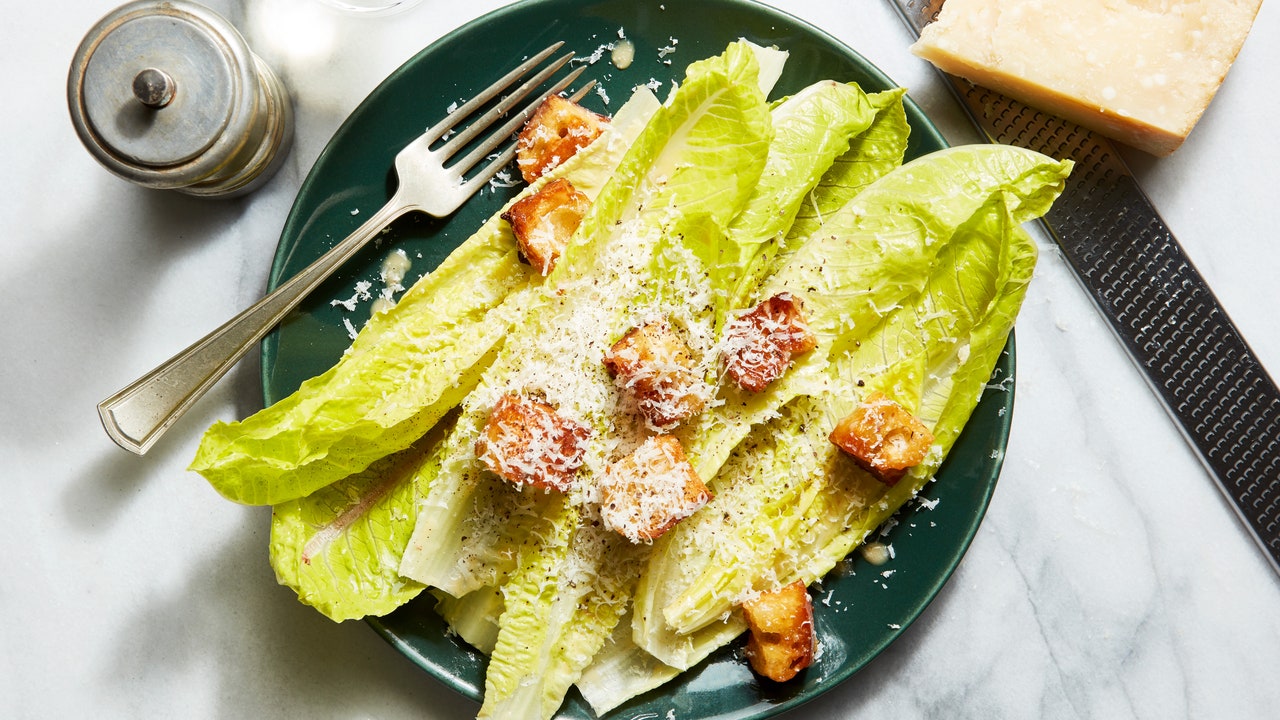How to Make a Classic Caesar Salad Dressing
The beloved, classic Caesar salad—that standard you can find everywhere from pizza parlors to supermarkets to upscale eateries—has a somewhat confusing identity. Is it Italian? Mexican? American? The answer is that this garlicky favorite is all three, a food that owes its existence to immigration, American Prohibition laws, and the genius of one enterprising restaurateur. According to legend (and lots of reliable reporting), the salad was created by Cesare Cardini (whose name is sometimes misspelled as “Caesar Cardini”), an Italian American chef who moved his restaurant to Tijuana from San Diego after the start of Prohibition. The spot became popular both with locals and visiting Americans (who poured over the border regularly to wet their whistles); as such, the restaurant often ran out of ingredients. On one such night, when the restaurant’s usual salad was 86’d, Cardini threw together a combination of romaine lettuce, Parmesan cheese, lemon juice, olive oil, eggs, and Worcestershire sauce. The result was so good, he added it to the menu.
In the century since, that simple original recipe has spawned almost countless variations. There are now chicken Caesar salads, kale Caesars, vegan versions, and fusion adaptations galore in pretty much every city across the country. Iterations of the salad’s creamy dressing recipe have add-ins like minced garlic, Dijon mustard, anchovy paste, raw egg yolks without the whites; some Caesar dressings are mixed by hand tableside, others whipped together in a food processor. Crispy homemade croutons, often made with hearty bread, like sourdough, have become de rigueur.
This version comes from former Gourmet food editor Shelley Wiseman. She notes that when her father, John Wiseman, and her stepmother moved from Mexico to England, her father started to help with the cooking—and the first thing he learned to make was this homemade Caesar recipe. It’s a pretty classic version, with anchovies in place of the original Worcestershire. Its utterly perfect flavors remind us exactly why Cardini’s spur-of-the-moment invention has remained popular for so many decades.
Recipe information
Total Time
25 minutes
Yield
6 servings
Ingredients
Preparation
Step 1
Season large bowl (preferably wooden) by rubbing 1 cut half of garlic and 1 tsp. oil onto bottom and side of bowl (reserve garlic).
Step 2
Heat ¾ cup extra-virgin olive oil with both halves of reserved garlic in a large skillet over moderately high heat, stirring, until golden, 1–2 minutes, then discard garlic. Add 1 Portuguese roll or a 7" piece of baguette, cut into ¾" cubes and cook, turning occasionally, until golden on all sides, about 2 minutes. Transfer croutons to paper towels to drain. Pour oil through a small fine-mesh sieve into a heatproof measuring cup and add enough additional olive oil to total 6 Tbsp.
Step 3
Add 8 anchovy fillets packed in oil, drained to prepared salad bowl and mash to a paste with a fork. Whisk in 1 large egg and 2 Tbsp. fresh lemon juice until combined. Pour reserved 6 Tbsp. extra-virgin olive oil (warm or at room temperature) in a slow stream, whisking until emulsified. Add kosher salt and freshly ground black pepper to taste.
Step 4
Add 3 hearts of romaine, leaves separated but left whole to dressing and toss to coat. Add croutons and toss briefly.
Step 5
Divide salad among 6 large plates, then sprinkle with 1 oz. finely grated Parmigiano-Reggiano and more black pepper to taste. Serve immediately.
Do ahead: Although the croutons are best warm, they can be fried 1 hour ahead.
Editor’s note: This recipe was originally printed in the June 2005 issue of ‘Gourmet.’ Head this way for more of our favorite salad recipes →
*Raw egg is not recommended for the elderly and people with weakened immune systems...or people who don’t like raw egg.
